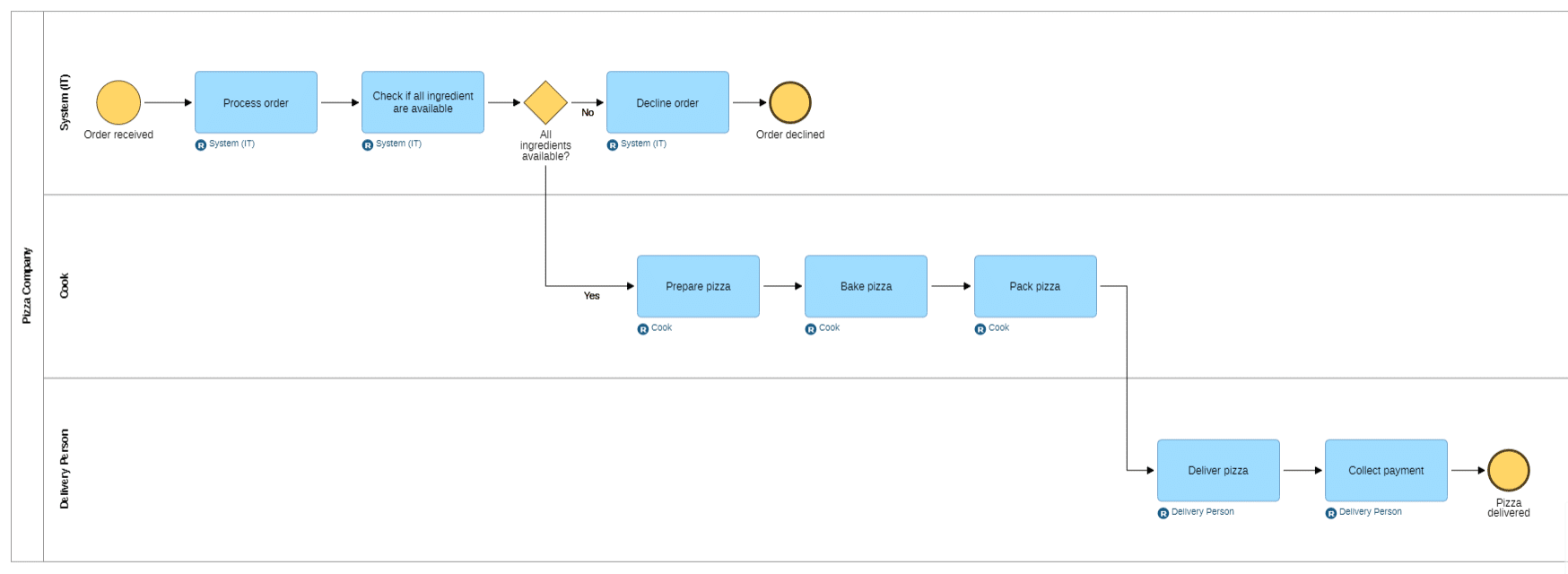Found this helpful? Share it with peers.
Introduction
In our BPM blog, we’ve extensively delved into process documentation and organizational strategies, emphasizing the importance of connecting the dots for a comprehensive view. Now, let’s translate these insights into tangible progress. This is where Standard Operating Procedures (SOPs) come into play, serving as the backbone of operational consistency within your organization. SOPs bridge theory and practice, turning abstract concepts into actionable steps.
Join us as we unveil the transformative power of SOPs, exploring their role in shaping a structured path from theory to practical implementation, guiding your organization confidently towards success.
What is a Standard Operating Procedure?
Before diving deeper into the topic, let’s define what an SOP is and what role it plays in an organization. In simple terms, an SOP serves as the rulebook for executing specific tasks, ensuring uniformity and consistency in performance. While a process outlines the steps to accomplish a task, an SOP goes further by standardizing these processes into detailed instructions.
Take the example of preparing a pizza. The process involves three roles: taking the order, cooking, and delivering. Although seemingly straightforward, the implicit steps for consistently delivering a high-quality pizza on time need to be defined. SOPs go a level deeper, providing detailed instructions for each role. For instance, the person taking orders should follow specific steps to ensure accuracy, the cook should be guided on ingredient quantities and order, and the delivery person should have instructions on handling and delivering the pizza.
Understanding this crucial distinction is key to leveraging SOPs for streamlined operations and enhanced efficiency.
Types of Standard Operating Procedures
A typical SOP is a detailed document providing step-by-step instructions for a specific task or operation. It often includes guidelines, safety protocols, and quality control measures to ensure consistent and accurate task performance.
Going back to our example, an SOP for a pizza parlor might appear as follows:
Standard Operating Procedure (SOP) for Pizza Preparation and Order Management
Objective: To ensure consistent quality in pizza preparation and effective order management for prompt delivery and customer satisfaction.
Typical process model of a pizza preparation process
I. Order Management:
- Greet the customer courteously and confirm the delivery location and contact details.
- Record the order accurately, specifying the pizza type, size, and any additional toppings or modifications as requested.
- Provide the customer with an estimated delivery time and confirm the order details before concluding the call.
II. Pizza Preparation:
- Gather all necessary ingredients and equipment, including pizza dough, sauce, cheese, and toppings.
- Flatten the pizza dough evenly to the desired thickness on a clean, floured surface.
- Spread the appropriate amount of sauce evenly over the dough, leaving a small border around the edges.
- Add the designated quantity of cheese, followed by the selected toppings, adhering to the customer’s specifications.
- Preheat the oven to the recommended temperature and duration for optimal baking.
- Place the prepared pizza in the oven, ensuring even heat distribution for thorough and uniform baking.
- Monitor the pizza closely during the baking process to prevent overcooking or burning.
- Once the pizza is thoroughly baked, remove it from the oven and place it on a designated pizza tray or cutting board for slicing.
III. Packaging and Delivery:
- Carefully transfer the sliced pizza onto a clean, heat-resistant pizza box or packaging container.
- Verify the order details with the delivery person, ensuring accuracy and completeness.
- Provide the delivery person with necessary instructions for safe and prompt delivery, emphasizing the importance of maintaining the pizza’s quality during transit.
- Communicate the estimated delivery time to the customer, ensuring transparency and managing expectations.
IV. Closing the Order:
- Update the order management system with the order status, delivery time, and any relevant notes or customer preferences.
- Thank the customer for their order and invite them to provide feedback on their experience.
Different types of SOPs serve various purposes across industries. Common types include administrative procedures, manufacturing protocols, quality assurance measures, safety guidelines, and compliance procedures. Depending on the type, SOPs may incorporate graphical depictions. For instance, in manufacturing, instructions may include images depicting steps such as placing screws to connect a smartphone motherboard. In the context of our pizza example, each step might feature images of toppings placement, oven settings, and the timer.
Types of Standard Operating Procedures
Ordering, preparing, and delivering a pizza may seem straightforward, but the devil is in the details. So, how long should a Standard Operating Procedure (SOP) be? The ideal length depends on the task’s complexity and required detail. Generally, SOPs should be concise and specific, offering clear instructions for easy comprehension and implementation.
Regular review and updates are crucial to reflect changes in the operational environment, regulations, or best practices. The frequency of updates depends on industry dynamics and organizational needs, ensuring that SOPs remain relevant and effective.
Responsibility for SOP relevancy typically lies with management or a designated committee overseeing operational standards and compliance. This ensures alignment with organizational objectives, regulatory requirements, and industry standards, incorporating input from stakeholders and subject matter experts.
Tipp: Master the art of how to write an effective SOP with our practical guide full of actionable tips.
Why are SOPs important
Are SOPs required? The answer varies depending on the specific context and industry nuances. While SOPs often form the backbone of operational consistency in many organizations, their necessity hinges on factors such as industry regulation and organizational priorities. In highly regulated sectors like pharmaceuticals, aircraft manufacturing, and automotive industries, SOPs are often mandatory to ensure adherence to standards and mitigate risks. In less regulated environments, the adoption of SOPs may be a strategic choice, influenced by factors like employee turnover and quality objectives.
It’s important to recognize that certain support and management processes may not require SOPs, especially those involving creativity or specialized knowledge where flexibility is key. Despite these nuances, appropriately applied SOPs can significantly enhance operational excellence, minimize errors, and promote standardized approaches within an organization’s context.
Industries That Use SOPs
Numerous industries recognize the indispensable value of SOPs in streamlining operations and ensuring consistent quality. Sectors such as healthcare, manufacturing, food and beverage, pharmaceuticals, aviation, and information technology heavily rely on SOPs to maintain regulatory compliance, uphold safety standards, and deliver efficient and standardized services or products. Embracing SOPs allows organizations in these sectors to optimize processes, mitigate risks, and cultivate a culture of operational excellence.
Summary
Standard Operating Procedures (SOPs) play a pivotal role in ensuring consistency, efficiency, and compliance across diverse industries. Offering explicit instructions for each operational task, SOPs streamline workflows, reduce errors, and enhance overall productivity. Despite challenges in their creation and implementation, the benefits of SOPs – maintaining uniformity, ensuring quality control, and adhering to regulations – are indispensable for organizations aiming for sustained operational excellence and long-term success.






